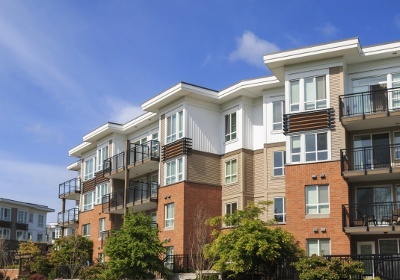 As the pace of fiber to the premises (FTTP) deployments increases, operators face a different challenge – successfully installing fiber within multiple dwelling units (MDUs), such as apartment buildings, offices, and hotels.
As the pace of fiber to the premises (FTTP) deployments increases, operators face a different challenge – successfully installing fiber within multiple dwelling units (MDUs), such as apartment buildings, offices, and hotels.
What makes this task difficult is that MDU is a whole new concept for many operators – particularly when installing fiber in existing buildings, with congested ducts. Most older buildings didn’t plan for future upgrades to technology such as fiber, limiting the space even more in these scenarios.
Every implementation is different, so to help planners and crews, here are four questions you should ask before beginning the process:
1. What route are you going to use vertically?
Fiber is typically installed through utility pathways, but these are often old, congested and may not even be properly mapped in the case of some buildings. When planning a route here are some areas to focus on:
- What are the easiest/most commonly used pathways?
- How congested are they?
- What is already installed in them?
- What can be removed?
- What construction work is needed to ensure your route is usable?
- What permissions do you need - for example, if you have to drill through walls?
2. What route/method are you going to use horizontally?
Once fiber cable reaches a floor, you need to plan how it is distributed to each apartment and, given this is normally a visible, common space, picking a solution that is aesthetically appealing is vital. Fiber cable can be run through existing wall cavities or false ceilings, keeping it out of sight or, alternatively, be mounted in ducts on the outside of the wall. It is now even possible to buy architectural moldings that have an in-built groove for fiber cable, further disguising the implementation and preserving the look of the corridor.
 3. Plenum or Riser?
3. Plenum or Riser?
Whether you use a plenum or a riser deployment depends on the type of space you are installing into. Bear in mind that whichever you choose you will need to meet relevant local fire regulations – which do differ between the United States and Europe.
Check the materials you are using and, in particular, areas such as the riser burn ratio and fire stops between each floor. Look at the National Electrical Code (NEC) in the US as a start point – and remember that the installer could be liable if things go wrong, and the deployment has not been properly certified.
4. Access to the building and to individual units
Fiber is normally routed into the basement and then up to each individual floor. Therefore, before beginning work, check that you have the right permissions and ability to access the areas of the building that you’ll be working on. Make sure that everyone involved, from the building owner to staff, understand what you are doing, and give tenants as much notice as possible, particularly if you are going to need to access their homes. You can read a handy guide aimed at landlords here.
Educate everyone involved in the process so that they know what to expect, and they can plan accordingly. Given the potential of fiber, it is especially important to educate everyone involved, not only on what you are going to do but around the capabilities of the technology they are getting. Building this understanding will get them onside and mean they get involved and take ownership of the process.
Overall, here are four points to follow that will make your implementation successful:
1. Always look to find the easiest path for fiber, even if that means making holes in the building. Figure out the path of least resistance.
2. Every implementation is different, meaning that the planner and installer both need to think on their feet and be flexible when deploying.
3. This is new to many crews, with different products and methodologies, meaning you need to invest in educating and training crews. Where before you could rely on brute force, now you need to think through every implementation.
4. Don’t go cheap and dirty when picking products for your deployment – instead, focus on time to installation, reliability and total cost of ownership. You only get one shot at this, so use the best product you can. Plan for it to be there for the next forty years – and choose your suppliers accordingly.
As consumers increasingly demand higher bandwidth connections to their apartments, then fiber deployments are likely to grow dramatically. However, to ensure that these are carried out quickly, cost-effectively, and with minimum disruption, operators need to embrace new ways of working if they are to succeed.


